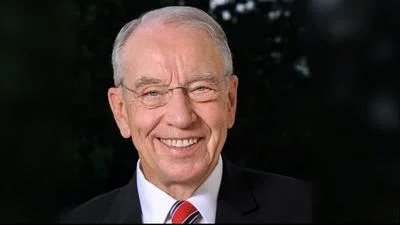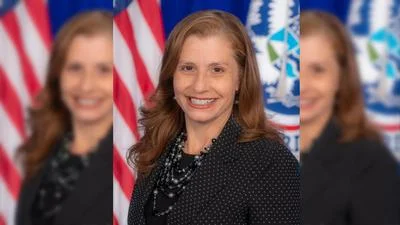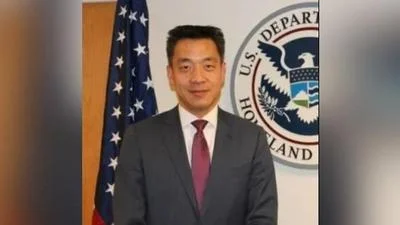The Congressional Record is a unique source of public documentation. It started in 1873, documenting nearly all the major and minor policies being discussed and debated.
“STATEMENTS ON INTRODUCED BILLS AND JOINT RESOLUTIONS” mentioning Chuck Grassley was published in the Senate section on pages S823-S825 on Feb. 23.
Of the 100 senators in 117th Congress, 24 percent were women, and 76 percent were men, according to the Biographical Directory of the United States Congress.
Senators' salaries are historically higher than the median US income.
The publication is reproduced in full below:
STATEMENTS ON INTRODUCED BILLS AND JOINT RESOLUTIONS
By Mr. DURBIN (for himself, Mr. Reed, Mr. Blumenthal, Mr. Brown,
Ms. Hassan, Ms. Warren, Mr. Schatz, Mr. Carper, Ms. Smith, and
Mr. Sanders):
S. 383. A bill to amend the Higher Education Act of 1965 regarding proprietary institutions of higher education in order to protect students and taxpayers; to the Committee on Health, Education, Labor, and Pensions.
Mr. DURBIN. Mr. President, I ask unanimous consent that the text of the bill be printed in the Record.
There being no objection, the text of the bill was ordered to be printed in the Record, as follows:
S. 383
Be it enacted by the Senate and House of Representatives of the United States of America in Congress assembled,
SECTION 1. SHORT TITLE.
This Act may be cited as the ``Protecting Our Students and Taxpayers Act of 2021'' or ``POST Act of 2021''.
SEC. 2. 85/15 RULE.
(a) In General.--Section 102(b) of the Higher Education Act of 1965 (20 U.S.C. 1002(b)) is amended--
(1) in paragraph (1)--
(A) in subparagraph (D), by striking ``and'' after the semicolon;
(B) in subparagraph (E), by striking the period at the end and inserting ``; and''; and
(C) by adding at the end the following:
``(F) meets the requirements of paragraph (2).'';
(2) by redesignating paragraph (2) as paragraph (3); and
(3) by inserting after paragraph (1) the following:
``(2) Revenue sources.--
``(A) In general.--In order to qualify as a proprietary institution of higher education under this subsection, an institution shall derive not less than 15 percent of the institution's revenues from sources other than Federal education assistance funds, as calculated in accordance with subparagraphs (B) and (C).
``(B) Federal education assistance funds.--In this paragraph, the term `Federal education assistance funds' means any Federal financial assistance provided, under this Act or any other Federal law, through a grant, contract, subsidy, loan, guarantee, insurance, or other means to a proprietary institution, including Federal financial assistance that is disbursed or delivered to an institution or on behalf of a student or to a student to be used to attend the institution, except that such term shall not include any monthly housing stipend provided under the Post-9/11 Veterans Educational Assistance Program under chapter 33 of title 38, United States Code.
``(C) Implementation of non-federal revenue requirement.--In making calculations under subparagraph (A), an institution of higher education shall--
``(i) use the cash basis of accounting;
``(ii) consider as revenue only those funds generated by the institution from--
``(I) tuition, fees, and other institutional charges for students enrolled in programs eligible for assistance under title IV;
``(II) activities conducted by the institution that are necessary for the education and training of the institution's students, if such activities are--
``(aa) conducted on campus or at a facility under the control of the institution;
``(bb) performed under the supervision of a member of the institution's faculty; and
``(cc) required to be performed by all students in a specific educational program at the institution; and
``(III) a contractual arrangement with a Federal agency for the purpose of providing job training to low-income individuals who are in need of such training;
``(iii) presume that any Federal education assistance funds that are disbursed or delivered to an institution on behalf of a student or directly to a student will be used to pay the student's tuition, fees, or other institutional charges, regardless of whether the institution credits such funds to the student's account or pays such funds directly to the student, except to the extent that the student's tuition, fees, or other institutional charges are satisfied by--
``(I) grant funds provided by an outside source that--
``(aa) has no affiliation with the institution; and
``(bb) shares no employees, executives, or board members with the institution; and
``(II) institutional scholarships described in clause (v);
``(iv) include no loans made by an institution of higher education as revenue to the school, except for payments made by students on such loans;
``(v) include a scholarship provided by the institution--
``(I) only if the scholarship is in the form of monetary aid based upon the academic achievements or financial need of students, disbursed to qualified student recipients during each fiscal year from an established restricted account; and
``(II) only to the extent that funds in that account represent designated funds, or income earned on such funds, from an outside source that--
``(aa) has no affiliation with the institution; and
``(bb) shares no employees, executives, or board members with the institution; and
``(vi) exclude from revenues--
``(I) the amount of funds the institution received under part C of title IV, unless the institution used those funds to pay a student's institutional charges;
``(II) the amount of funds the institution received under subpart 4 of part A of title IV;
``(III) the amount of funds provided by the institution as matching funds for any Federal program;
``(IV) the amount of Federal education assistance funds provided to the institution to pay institutional charges for a student that were refunded or returned; and
``(V) the amount charged for books, supplies, and equipment, unless the institution includes that amount as tuition, fees, or other institutional charges.
``(D) Report to congress.--Not later than July 1, 2021, and by July 1 of each succeeding year, the Secretary shall submit to the authorizing committees a report that contains, for each proprietary institution of higher education that receives assistance under title IV and as provided in the audited financial statements submitted to the Secretary by each institution pursuant to the requirements of section 487(c)--
``(i) the amount and percentage of such institution's revenues received from Federal education assistance funds; and
``(ii) the amount and percentage of such institution's revenues received from other sources.''.
(b) Repeal of Existing Requirements.--Section 487 of the Higher Education Act of 1965 (20 U.S.C. 1094) is amended--
(1) in subsection (a)--
(A) by striking paragraph (24);
(B) by redesignating paragraphs (25) through (29) as paragraphs (24) through (28), respectively;
(C) in paragraph (24)(A)(ii) (as redesignated by subparagraph (B)), by striking ``subsection (e)'' and inserting ``subsection (d)''; and
(D) in paragraph (26) (as redesignated by subparagraph
(B)), by striking ``subsection (h)'' and inserting
``subsection (g)'';
(2) by striking subsection (d);
(3) by redesignating subsections (e) through (j) as subsections (d) through (i), respectively;
(4) in the matter preceding paragraph (1) of subsection (d)
(as redesignated by paragraph (3)), by striking ``(a)(25)'' and inserting ``(a)(24)'';
(5) in subsection (f)(1) (as redesignated by paragraph
(3)), by striking ``subsection (e)(2)'' and inserting
``subsection (d)(2)''; and
(6) in subsection (g)(1) (as redesignated by paragraph
(3)), by striking ``subsection (a)(27)'' in the matter preceding subparagraph (A) and inserting ``subsection
(a)(26)''.
(c) Conforming Amendments.--The Higher Education Act of 1965 (20 U.S.C. 1001 et seq.) is amended--
(1) in section 152 (20 U.S.C. 1019a)--
(A) in subsection (a)(1)(A), by striking ``subsections
(a)(27) and (h) of section 487'' and inserting ``subsections
(a)(26) and (g) of section 487''; and
(B) in subsection (b)(1)(B)(i)(I), by striking ``section 487(e)'' and inserting ``section 487(d)'';
(2) in section 153(c)(3) (20 U.S.C. 1019b(c)(3)), by striking ``section 487(a)(25)'' each place the term appears and inserting ``section 487(a)(24)'';
(3) in section 496(c)(3)(A) (20 U.S.C. 1099b(c)(3)(A)), by striking ``section 487(f)'' and inserting ``section 487(e)''; and
(4) in section 498(k)(1) (20 U.S.C. 1099c(k)(1)), by striking ``section 487(f)'' and inserting ``section 487(e)''.
______
By Mr. GRASSLEY (for himself, Mr. Rubio, Ms. Cortez Masto, Mr.
Scott of Florida, Mr. Manchin, Ms. Collins, and Ms. Hassan):
S. 391. A bill to amend title 18, United States Code, to reauthorize and expand the National Threat Assessment Center of the Department of Homeland Security; to the Committee on the Judiciary.
Mr. GRASSLEY. Mr. President, I come to the floor to reintroduce a bill that didn't get passed last Congress, a bill that deals with safety in our schools, a bill aimed at the disasters that come when schoolchildren are killed by shooters and to deal with this problem through a program that the Secret Service has had for decades and asking the Secret Service to see what they can do to apply the principles of that program to stop mass killings at our schools.
Three years ago, on February 14, 2018, an unspeakable tragedy occurred at Marjory Stoneman Douglas High School in Parkland, FL. In less than 4 minutes, 14 students and 3 staff members were killed, and, consequently, their families' and friends' lives were shattered forever by such a senseless act.
Today, along with my colleagues Senators Rubio and Scott of Florida, Senators Cortez Masto, Collins, Manchin, and Hassan, I am proud to reintroduce legislation that will proactively mitigate threats of violence on school campuses by reauthorizing and expanding the U.S. Secret Service's program called the National Threat Assessment Center.
The National Threat Assessment Center studies targeted violence and develops best practices and training to identify and manage threats before they result in violence like we saw at that school 3 years ago.
The bill establishes a Safe School Initiative, a national program on school violence prevention, that will include expanded research on school violence. Most importantly, this legislation allows the Secret Service to directly equip communities and schools with training and best practices on recognizing and preventing school violence.
This bill, which I hope will help us to recognize the signs of a potential attack way long before such an attack occurs, carries the namesake of those it couldn't save, the Marjory Stoneman Douglas High School mascot, so this bill is called the EAGLES Act because that is the mascot of that school.
Two years ago, the Secret Service conducted a review of school shootings and made a very pivotal finding: All attackers exhibited concerning behaviors prior to engaging in an act of violence. In other words, it should be easy to identify these people, and, if identified, intervention is possible. So had these signs been recognized at an early enough stage, these attacks could have been stopped.
In the wake of the Parkland shooting in 2018, Congress took steps to protect schools and to prevent gun violence, including the passage of the Students, Teachers, and Officers Preventing School Violence Act, which provided funding to schools to strengthen their infrastructure to make it more difficult for shooters to enter schools.
At that same time, we passed the Fix NICS Act, a law which penalizes Federal agencies that fail to comply with legal requirements to report dangerous individuals and violent criminals to the National Instant Criminal Background Check System so that if they are so reported, then they won't be able to purchase a gun. However, by passing the EAGLES Act, we are entering a vital third step in addition to those other two bills to protect our schools.
I would like to encourage all of my Senate colleagues to support this bipartisan and, I think, a very commonsense bill. I hope that we can focus on productive measures like these rather than unfocused efforts to undermine lawful gun ownership
____________________




 Alerts Sign-up
Alerts Sign-up